If you enjoy getting lost in architecturally rich neighbourhoods, you’ll love Malta. Art is reflected in its balconies, door-knockers, and exquisitely adorned corner niches. These, and more, are reasons to spend many pleasurable hours wandering the streets of towns and villages while absorbing the magnificent balconies and door-knockers of Malta.
Balconies and door-knockers of Malta
A rich variety of balconies and door-knockers can be found throughout the archipelago.
Traditional Maltese balcony
The Maltese gallarija is an enclosed, painted wooden balcony with glass windows. It’s a prominent feature of Maltese architecture, oozing in antiquity and tradition.
Gallariji enhance the visual appeal of Malta’s urban landscape with its grand avenues and narrow alleys.
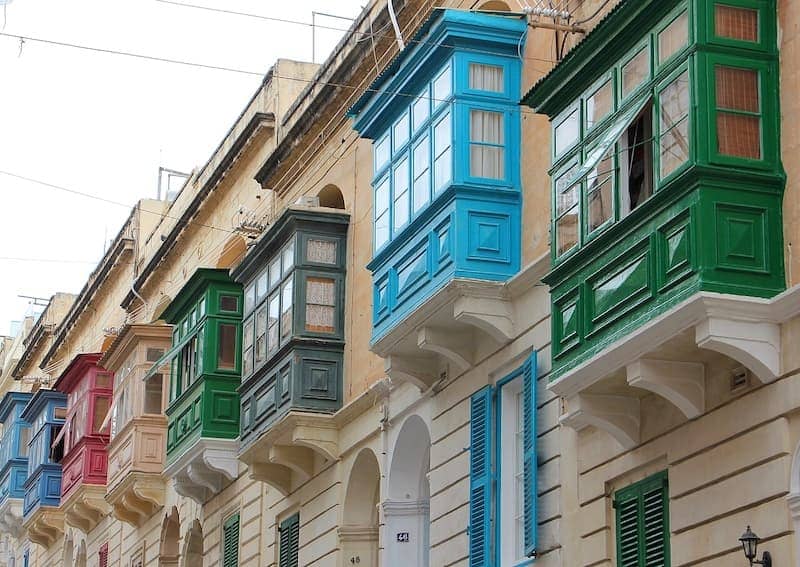
Open-stone balconies are the oldest type of Maltese balcony. They reflect the availability of soft workable stone and the scarcity of lumber on the islands.
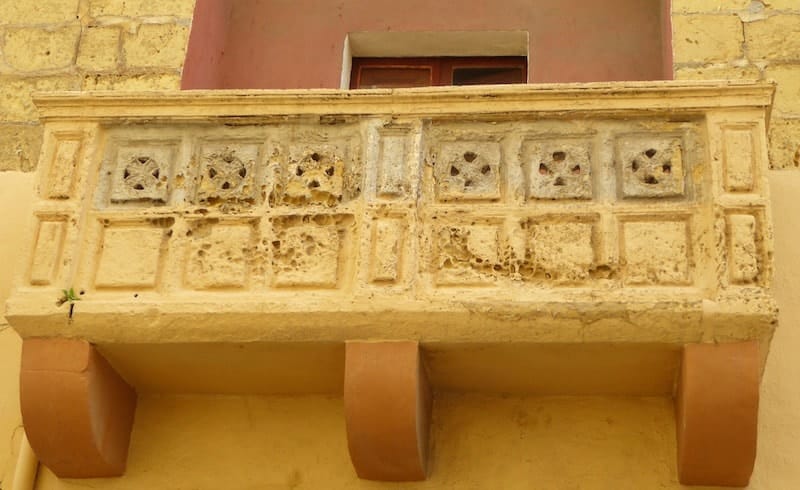
This balcony on Gozo was probably built at two different times. During the British era, lumber became less expensive and within reach of residents.
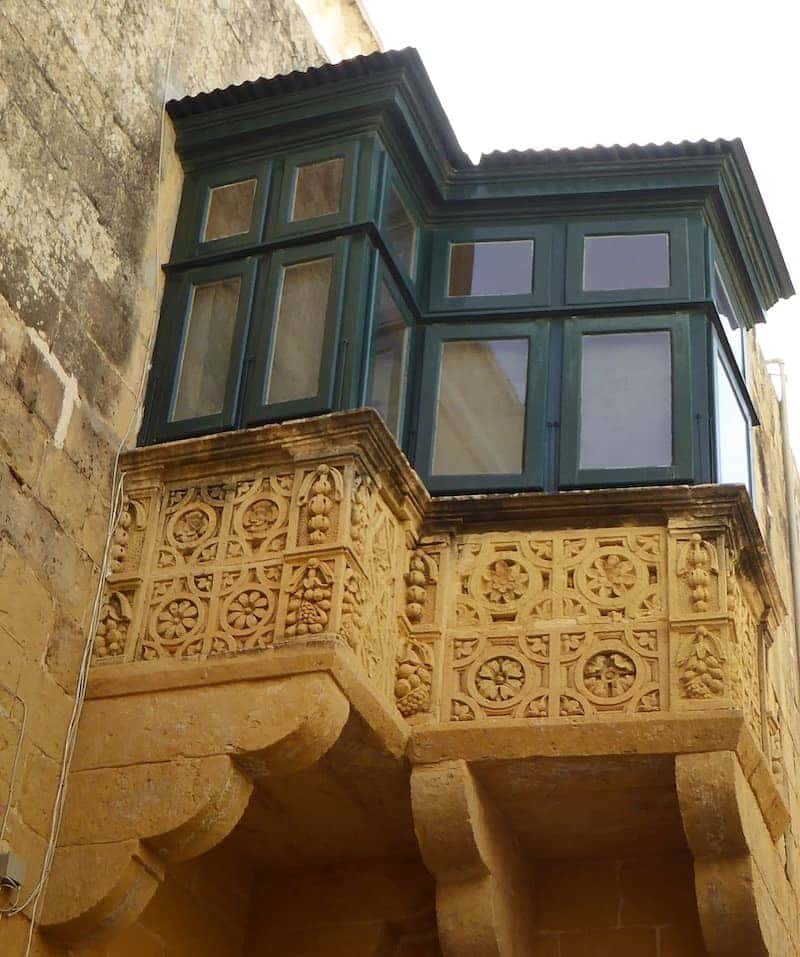
At the corners of buildings, ornamentation includes wrap-around balconies.
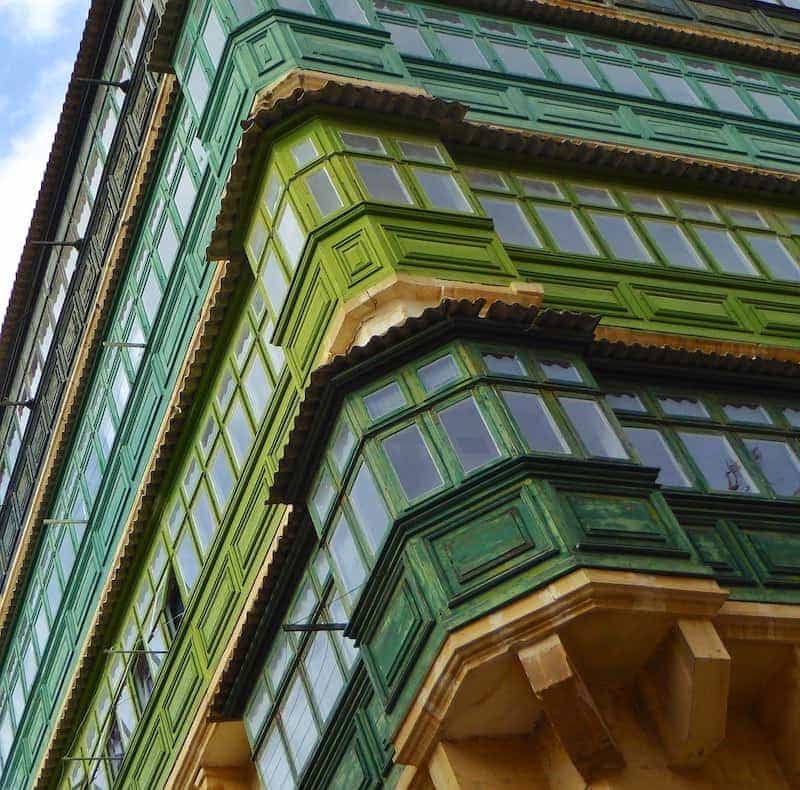
Or they boast sculptural adornment comprising street corner niches and statues.
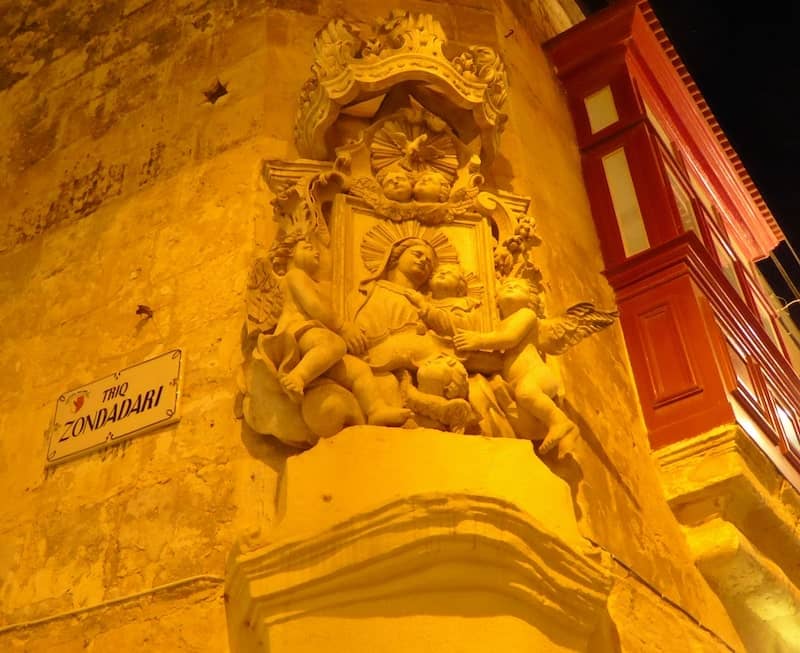
Origins of the Maltese gallariji can be traced to North African influences. The muxrabija was a wooden frame around a window. Small holes in the frame allowed a person on the inside to observe the goings on outside while being hidden from view. This was especially important for women in traditional Islamic society to be shielded from curious eyes and unwanted attention. Muxabijii were also a security measure in villages whose residents lived away from the safety of Mdina and other fortified cities.
Maltese door-knocker
The Maltese il-ħabbata (door-knocker) embellishes residences and public buildings.
A relatively recent addition to building facades, these intricate works of art entered the picture when knocking replaced the practice of scratching at the unlocked doors of medieval times. They’ve survived mechanical and electric doorbells and more modern inventions in many buildings. While doorbells exist, door-knockers still grace the doors of Malta’s houses.
In fact, in 2008, Malta Post issued four stamps to acknowledge their contribution to Malta’s unique architectural heritage. The actual door-knockers that inspired each postage stamp are at these buildings in Valetta:
- The Ministry of Finance in South Street;
- Museum of Fine Arts, also in South Street;
- Department of Industrial and Employment Relations in Melita Street; and
- Museum of Archaeology in Republic Street.
Door-knockers serve the dual purpose of announcing one’s presence and opening and closing heavy doors more efficiently. A common feature of modest dwellings is a simple brass or metal ring.
Others are quite elaborate, reflecting the residents’ status, personality, occupation, or family history. When there was a death in the family, the door-knocker would be removed to indicate a period of mourning and that the residence would be closed for several days.
While not endemic to the Mediterranean, lions are a popular design. They’re said to represent strength, power, pride, and protection. A lion-head door-knocker acts as a guardian to the home, and therefore, watches over the residences they adorn. There are many variations of lion-head knockers gracing the doors of Malta and Gozo. Raisa Tarasova has photographed 30 in her article, Lions on your door: lion head door knockers of Malta and Gozo.
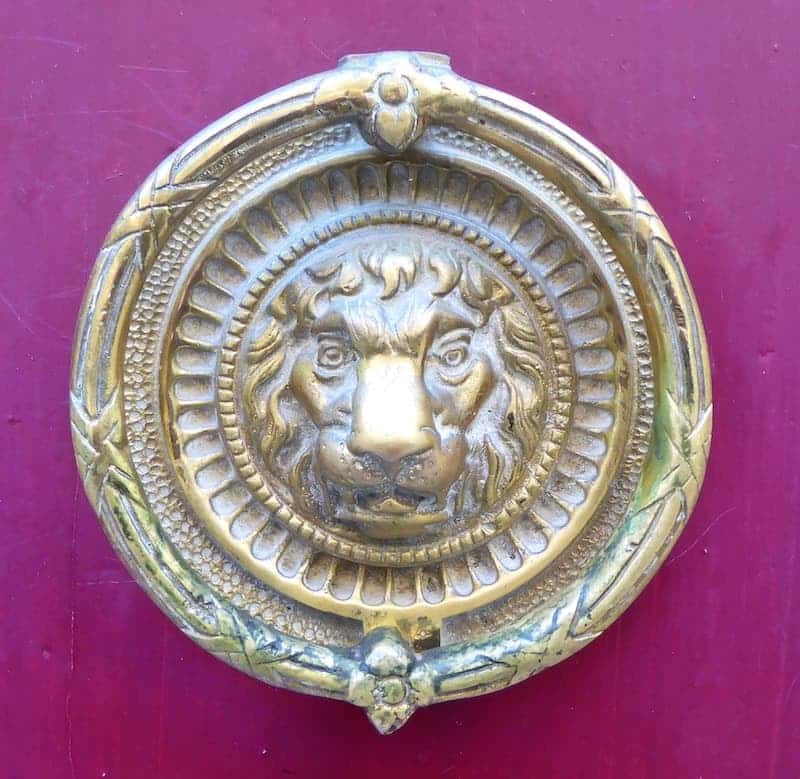
The dolphin with a trident-shaped tail is very common, with its sleek lines and smooth surface.
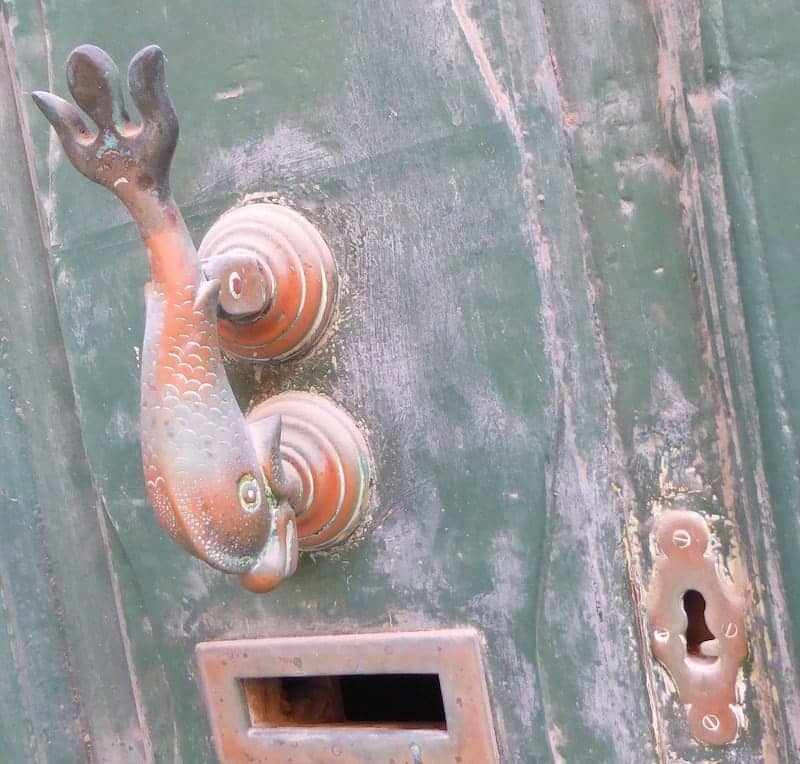
I also saw designs featuring a pair of dolphins touching at the mouth and tail to form a circle, with the Maltese cross as a base. Perhaps it’s a connection to Malta’s first post-independence coat of arms that featured a pair of these remarkable creatures. The Maltese cross is associated with the Knights of St. John of Jerusalem, who ruled the Maltese islands between 1530 and 1798. The cross has become an integral part of Malta’s culture and heritage, and a much-cherished symbol by the Maltese.

Just as attractive were the doors, plain or decorative, featuring bold colours, cracked mouldings or peeling paint from decades, if not centuries, of existence. Imagine what treasures and history are behind those doors.
Take home a memento of Malta
Got space in your bag? Look for a second-hand door-knocker in an antiques shop or flea market. Or, the Artisans Centre in Republic Street, Valletta has a decent selection of door-knockers of various designs. For something smaller, perhaps jewellery is more your style? If so, look for a door-knocker-inspired necklace or earrings.
If Malta is on your travel list, you might be interested in:
- 25 Fabulous things to do in Malta to help plan your visit
- Where to find amazing seafood in Malta
- Visit Blue Grotto Malta: another superb natural treasure
If you found this post helpful, please share it by selecting one or more social media buttons. Have you been to Malta? If so, were you as enamoured as I was with the magnificent balconies and door-knockers? Do tell, in the comments. Thank you.
Care to pin it for later?
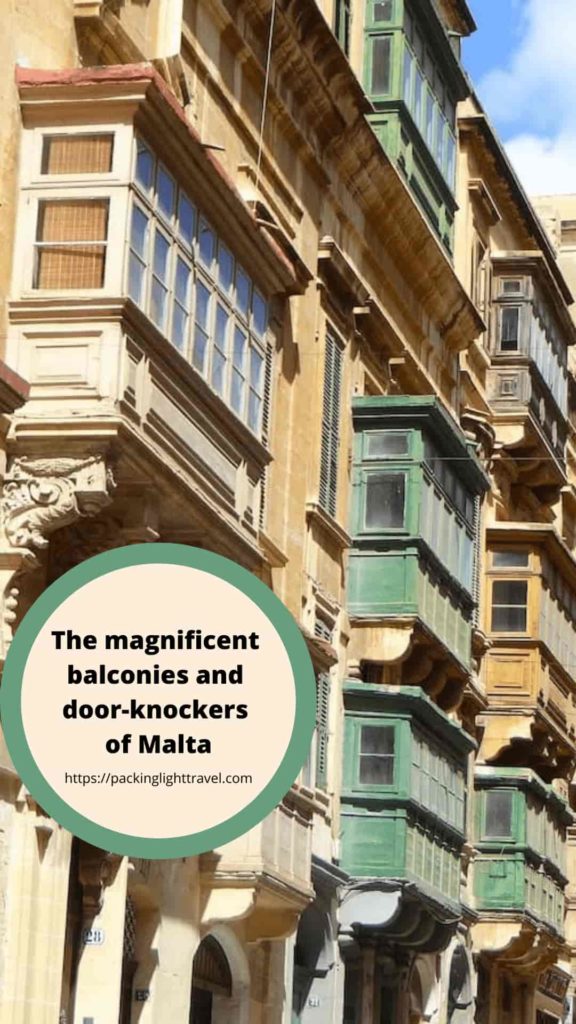

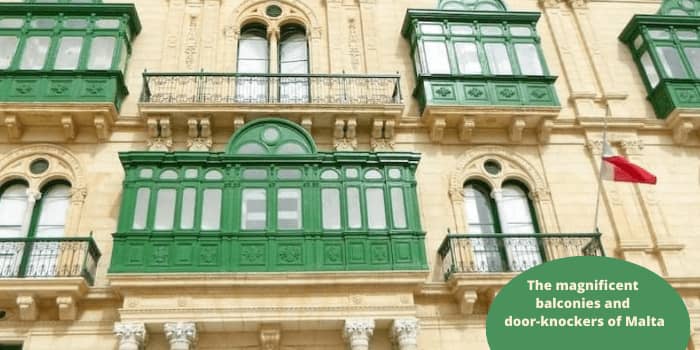




It’s crazy how much detail goes into those door knockers. I was in Malta just before the lockdown. Will have a look at my photos but that detail seemed to have gone unnoticed to me. What a shame.
Thank you, David, for dropping by. I couldn’t get enough of those door-knockers, corner niches, balconies, and other architectural embellishments. I wandered the streets for hours soaking them up.
I was in Malta close to 20 years ago and will never forget those door knockers. My wife and I loved them so much, we did in fact buy one secondhand and take it home to the states – and it adorns our door to this day!